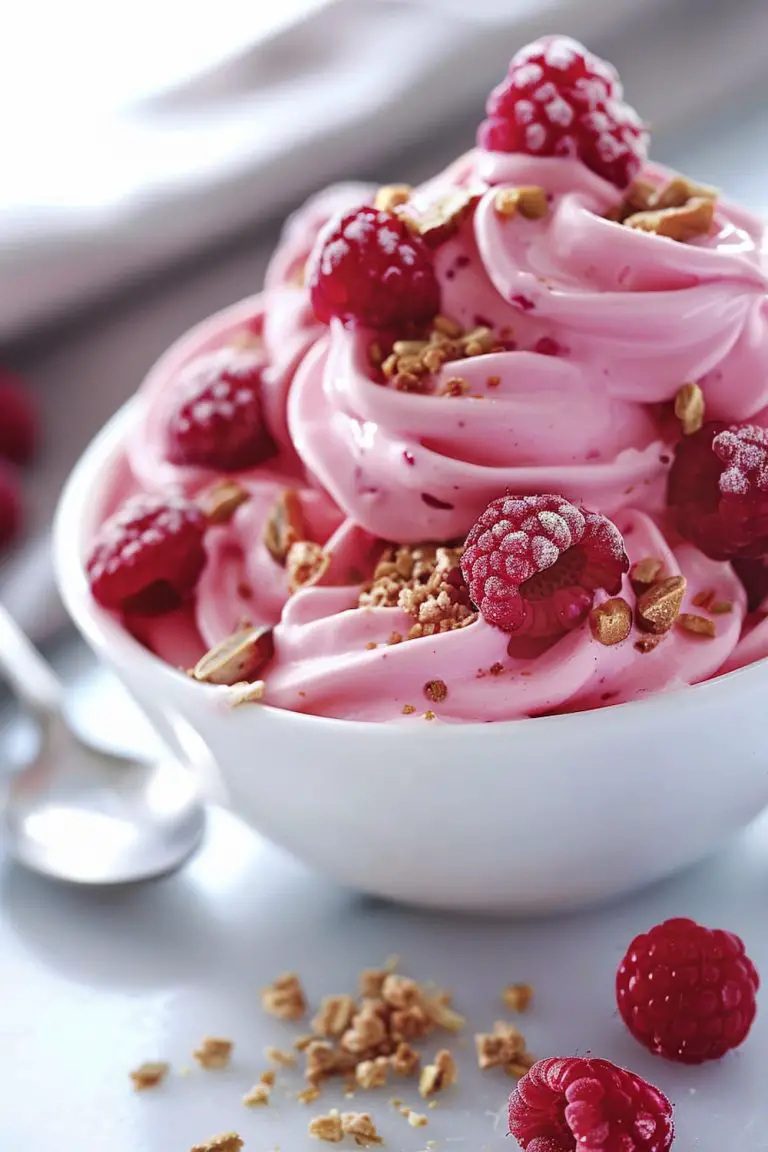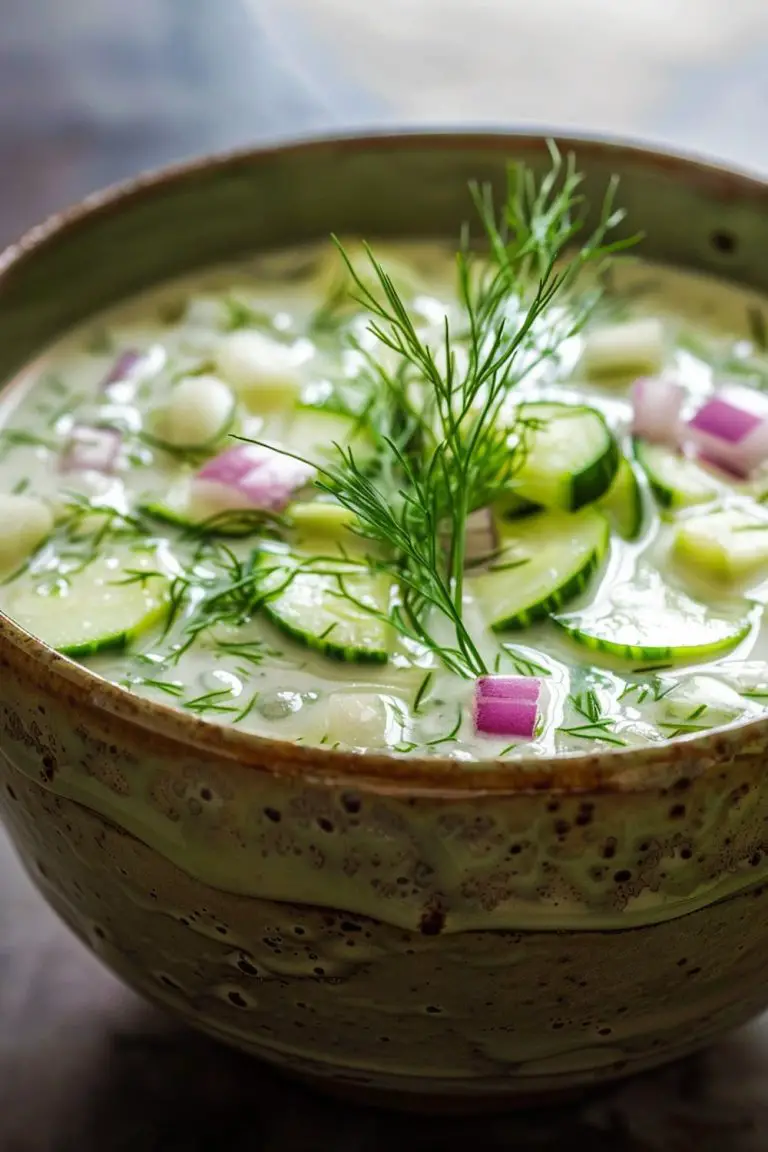Indian Salad with Spices Quick Preparation
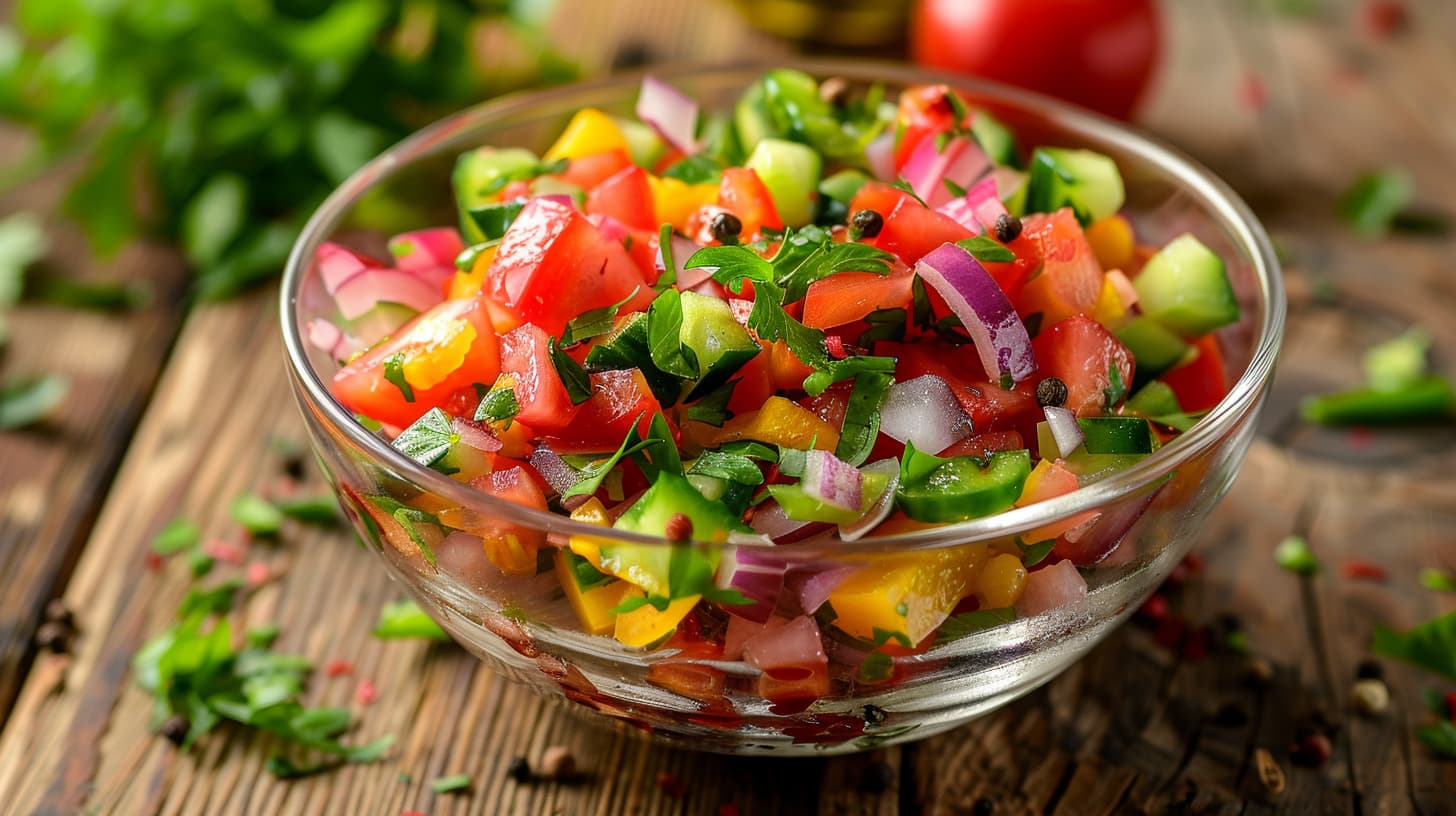
In just about 15 minutes, and with wholesome ingredients, you can create an authentic Indian Spicy Salad preparation in your kitchen.
While traditionally made with cucumbers, tomatoes, onions, and cilantro, Indian Salad with Spices welcomes variations. You can easily adapt it to include avocados, radishes, or chickpeas, making it a perfect fit for different dietary preferences or meal times.
Regional Variations of Indian Spicy Salads:
- North India: Often includes cucumber, tomatoes, onions, and sometimes radishes, seasoned with chaat masala and lemon juice for a tangy finish.
- South India: Might include grated coconut or a tempering of mustard seeds and curry leaves to add a distinct South Indian flavor.
- West India: In Gujarat and Maharashtra, a similar salad might include a pinch of sugar to add a sweet note, reflecting the regional palate.
- East India: Here, the addition of green chilies and mustard oil is common, giving the salad a spicy kick and a pungent flavor characteristic of Eastern Indian cuisine.
Why You’ll Love This Recipe:
- Refreshing Taste: The crisp vegetables combined with a tangy dressing offer a refreshing bite, perfect for any season.
- Quick and Easy: Ready in minutes, this salad is a hassle-free addition to any meal, requiring minimal preparation.
- Health Benefits: Packed with fresh veggies and dressed with spices known for their health properties, it’s not just tasty but also good for you.
- Versatile: Serve it alongside your favorite Indian dishes or incorporate it into your daily meals for a touch of spice and flavor.
In this guide, you’ll learn
- How to prepare Indian Salad with Spices in your kitchen
- Common Mistakes To Avoid, Pro Tips To Enhance The Taste Of the Dish
- FAQs (Reader Questions Answered) and much more stuff!
So, grab your apron, and let’s dive in!
How to make Restuarant Style Indian Salad with Spices
Total Time: 20 minutes
- Preparation Time: 20 minutes
- Cooking Time: 0 minutes
- Serves: 4
Ingredients:
- Cucumbers: 2 medium, diced (Provides a refreshing crunch)
- Tomatoes: 2 large, diced (Adds juiciness and color)
- Red Onion: 1 small, finely chopped (For a sharp bite)
- Carrot: 1 large, grated (For sweetness and texture)
- Radishes: 4-5, thinly sliced (Optional, for peppery notes)
- Cilantro: ¼ cup, chopped (For freshness)
- Mint Leaves: 2 tablespoons, chopped (Adds a cool, aromatic flavor)
- Lemon Juice: From 1 large lemon (For tanginess)
- Roasted Cumin Powder: 1 teaspoon (For a smoky, earthy depth)
- Chaat Masala: 1 teaspoon (A tangy spice mix available at Indian groceries)
- Black Salt (Kala Namak): ½ teaspoon (For a unique sulfurous accent, substitute with Himalayan pink salt if unavailable)
- Olive Oil: 2 tablespoons (Brings everything together; you can use any mild-flavored oil)
- Pepper: To taste (For a bit of heat)
Instructions:
Prepare the Vegetables:
Begin by washing all your vegetables under cold running water. Dice the cucumbers and tomatoes, ensuring to remove the seeds from the tomatoes to avoid excess moisture in the salad. Peel and grate the carrot, and finely chop the red onion and radishes, if using.
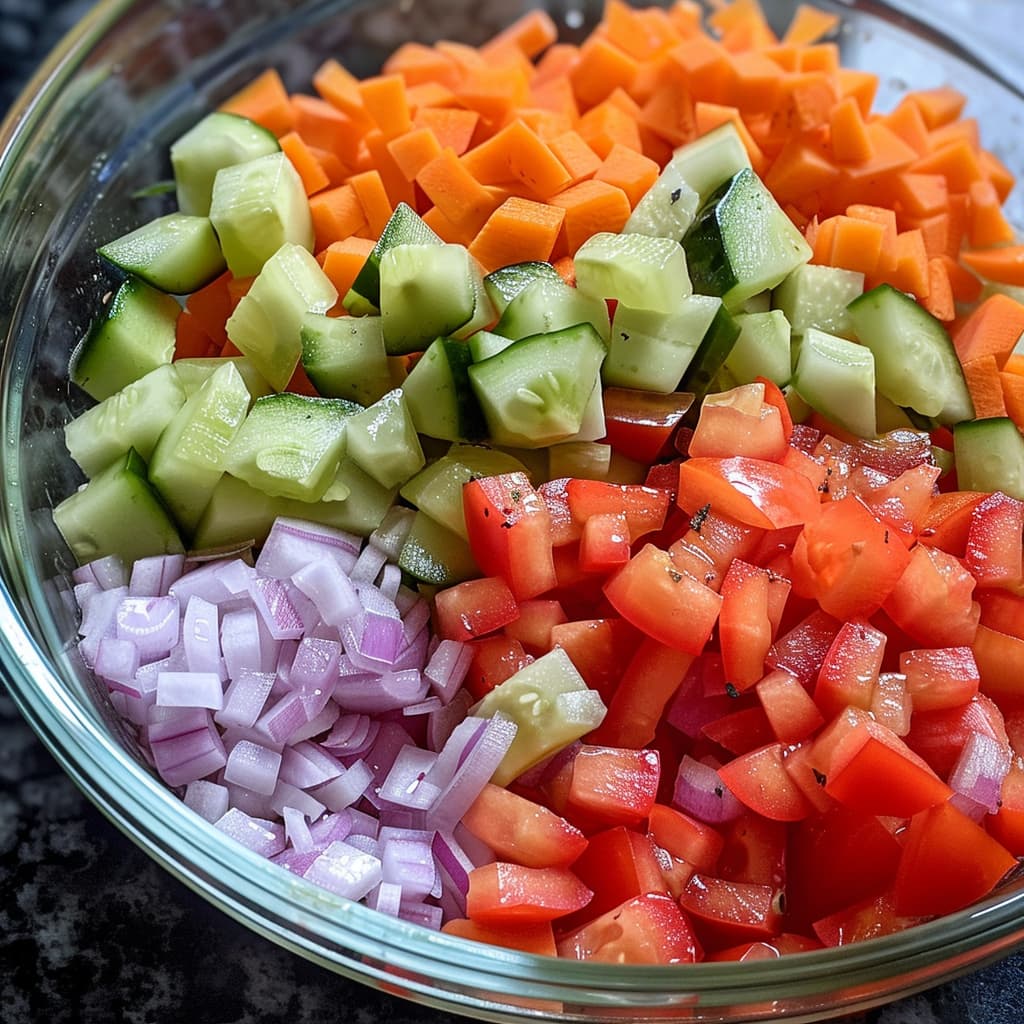
When dicing cucumbers and tomatoes, aim for uniform pieces not just for aesthetic reasons but also to ensure each bite has an even distribution of flavors and textures.
If you’re not a fan of raw onions’ sharpness, you can soak the chopped onions in ice water for about 10-15 minutes before draining and adding them to the salad; this process mellows their bite
Chop the Herbs:
Next, finely chop the cilantro and mint leaves. These herbs will add a burst of freshness to your salad, so don’t skip them!
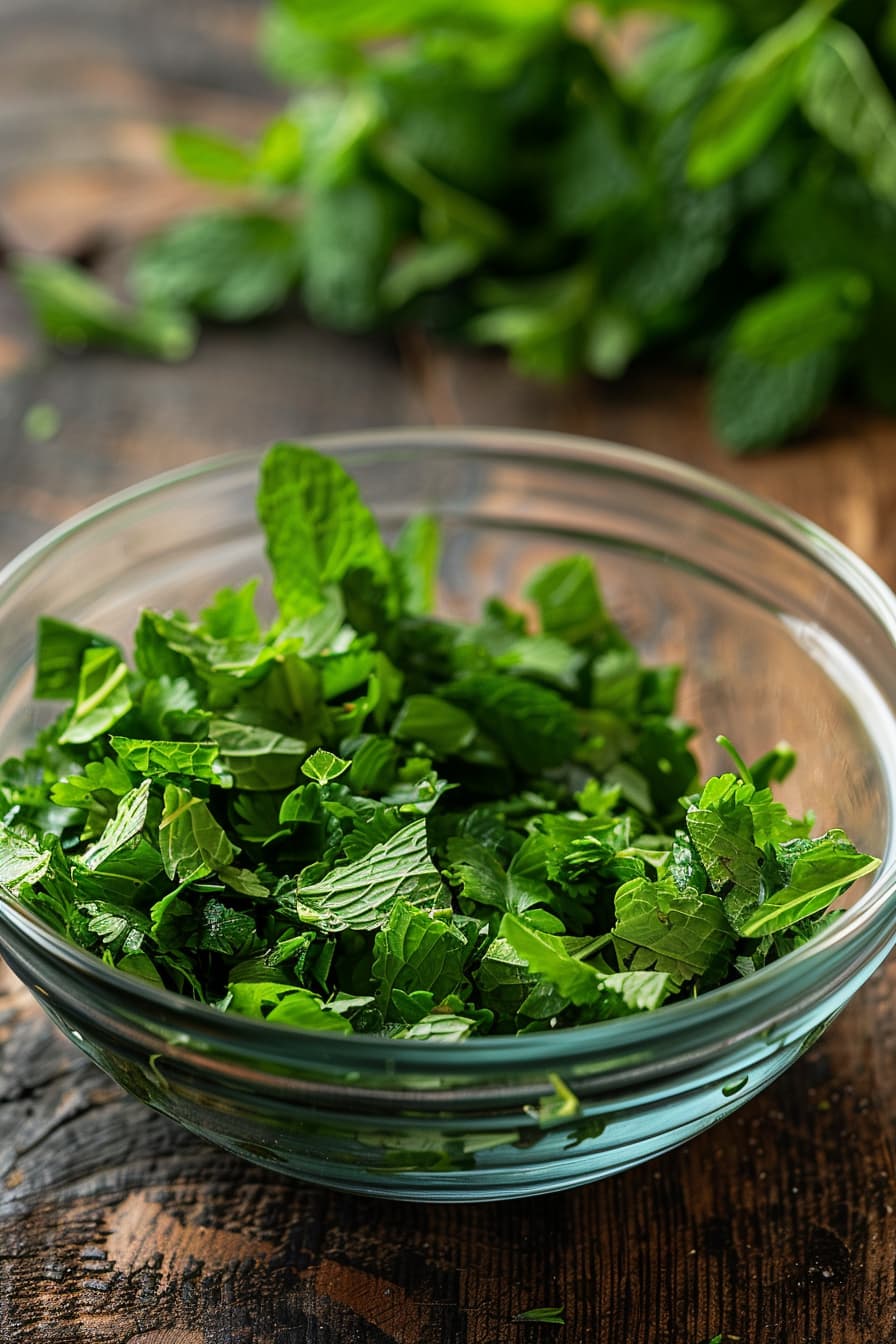
Fresh herbs like cilantro and mint are delicate and can wilt or lose their vibrancy if chopped too far in advance or if dressed too early. Chop them right before preparing the salad and add the dressing just before serving to maintain their fresh, vibrant flavors.
Make the Dressing:
In a small bowl, whisk together the lemon juice, olive oil, roasted cumin powder, chaat masala, black salt, and pepper. This spiced dressing is the heart of your salad, infusing it with distinctive Indian flavors.
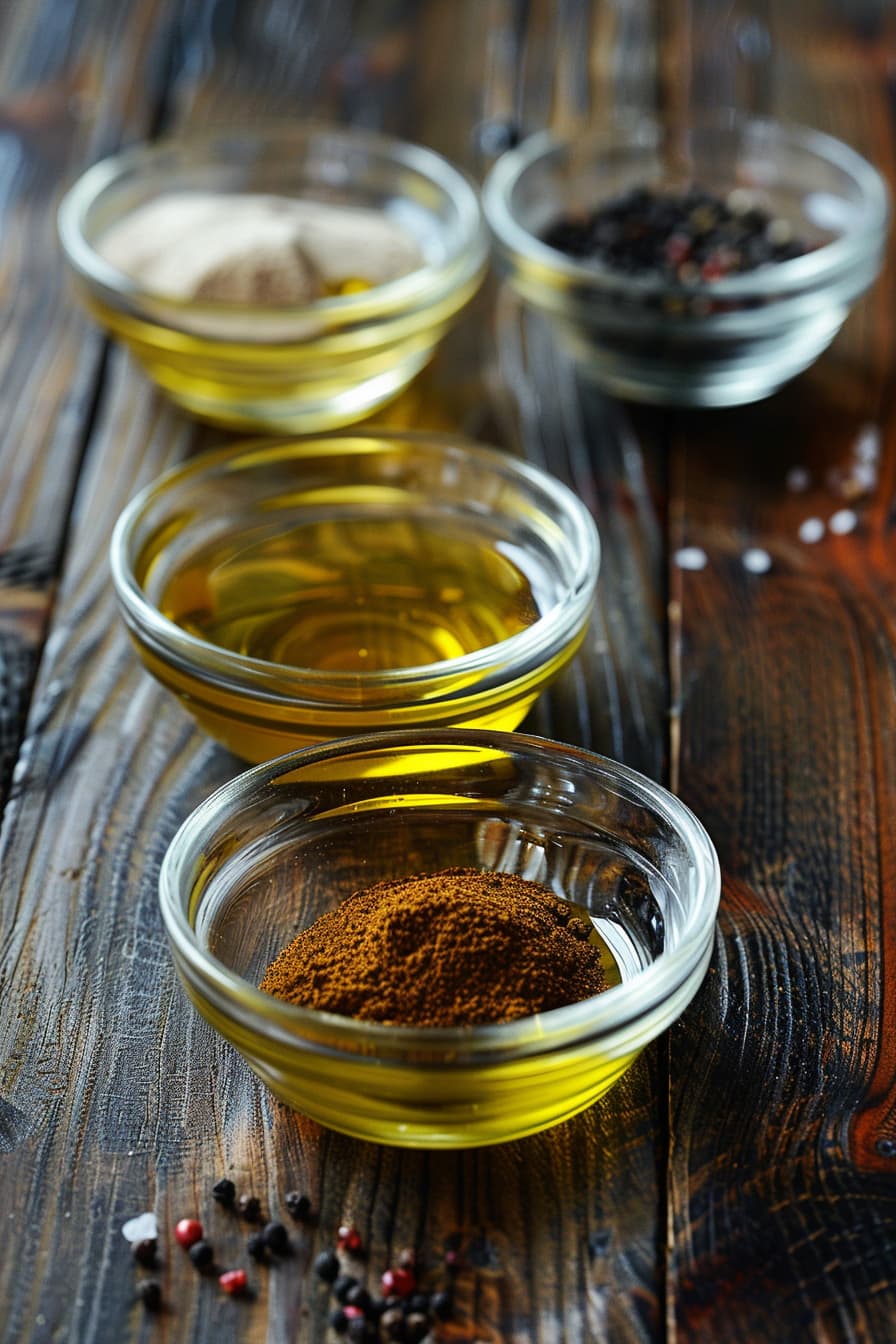
The intensity of lemon juice and spices can vary based on personal preference and the acidity of the lemon.
Start by adding half the amount of lemon juice and spices to the dressing, taste, and then adjust accordingly. It’s easier to add more than to balance an overly tangy or spicy dressing.
Combine:
In a large mixing bowl, combine the diced cucumbers, tomatoes, grated carrots, chopped onions, radishes, cilantro, and mint.
Pour the dressing over the vegetables and gently toss to ensure every piece is beautifully coated with the spiced dressing.
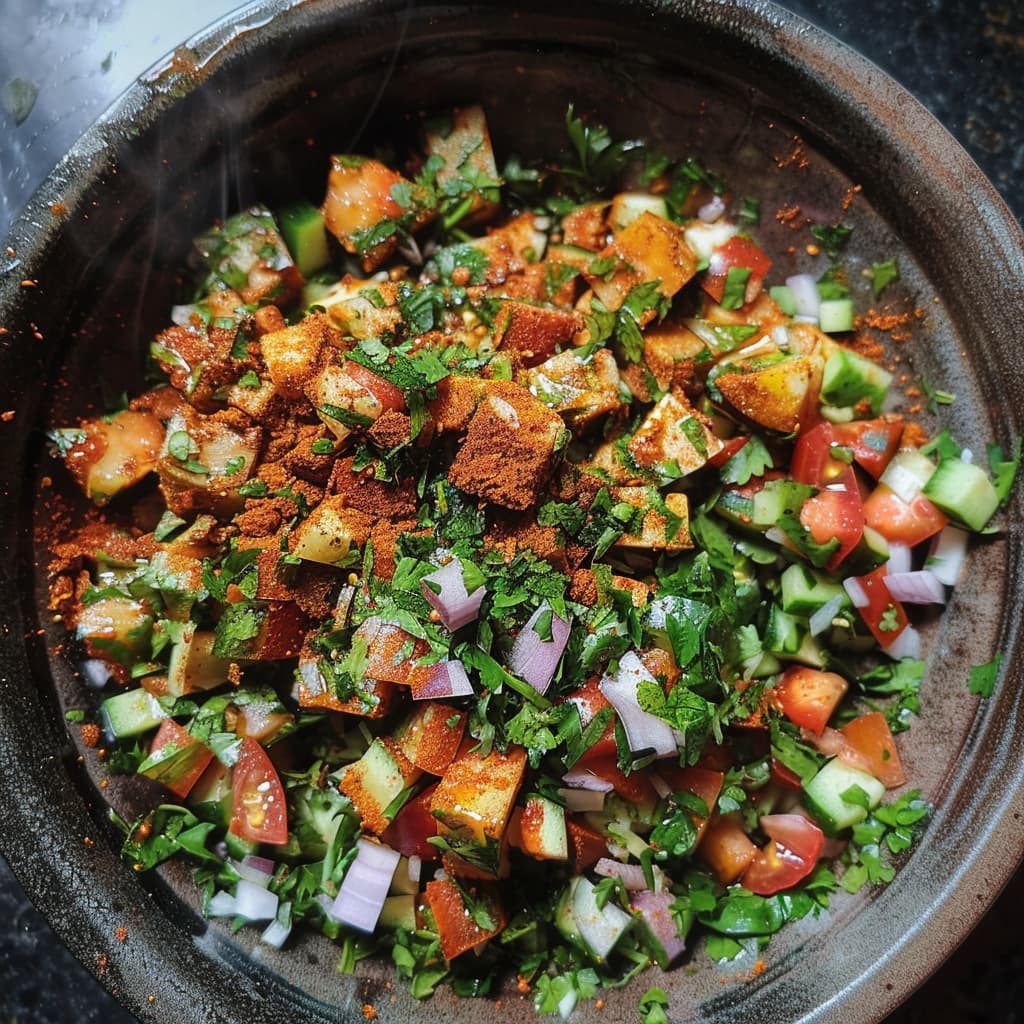
Chaat Masala and Roasted Cumin Powder:
These spices are key to the salad’s unique flavor profile.
If you’re not familiar with roasting and grinding cumin, you can buy pre-roasted cumin powder. However, toasting cumin seeds briefly in a dry pan and then grinding them can enhance the salad with a fresher, more aromatic spice note.
Let It Marinate:
Allow the salad to sit for about 5-10 minutes before serving.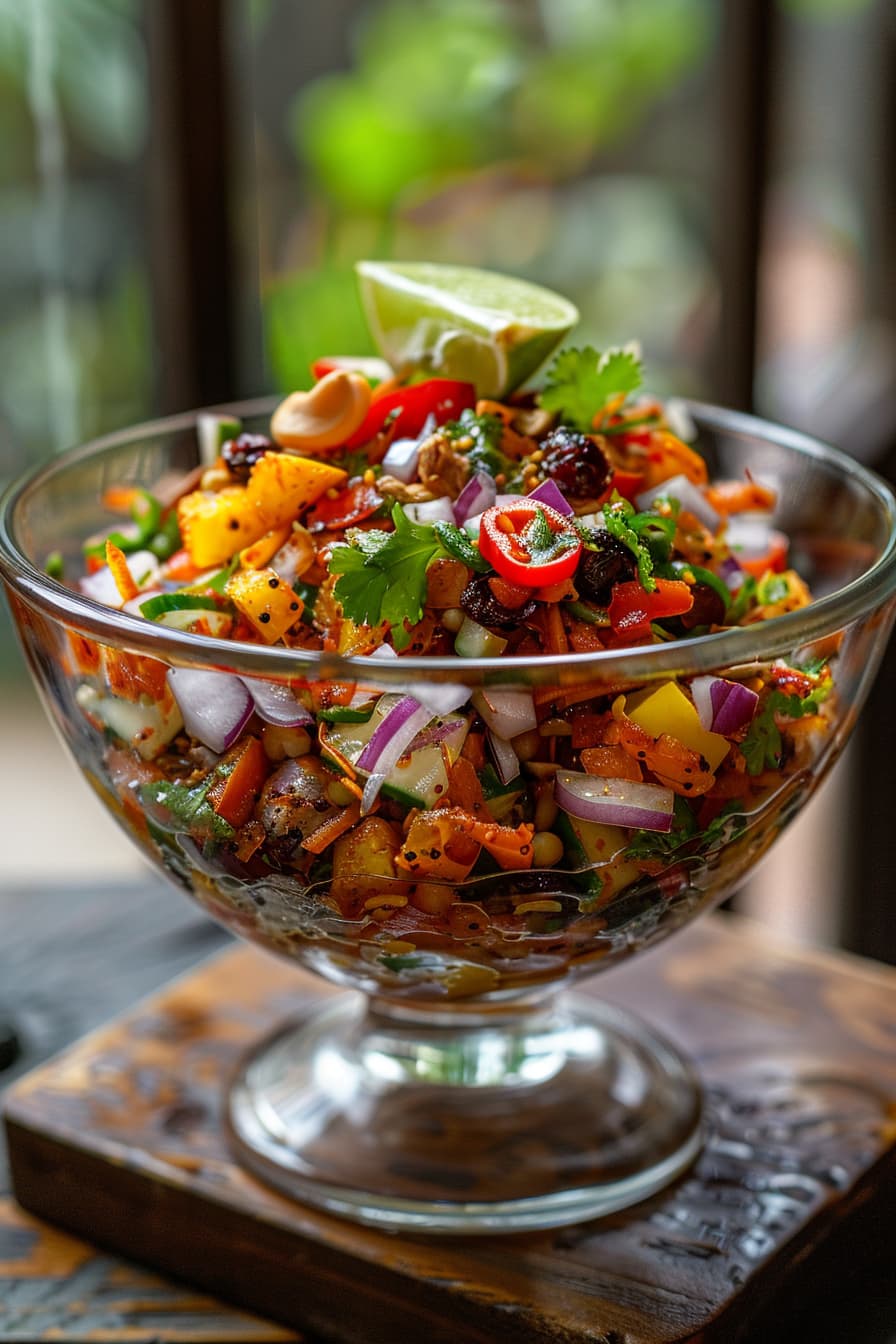
This resting time lets the vegetables soak up the flavors of the dressing, enhancing the overall taste of the salad.
Serve:
Taste the salad and adjust the seasoning if necessary. Serve the salad chilled or at room temperature as a refreshing side to any meal.
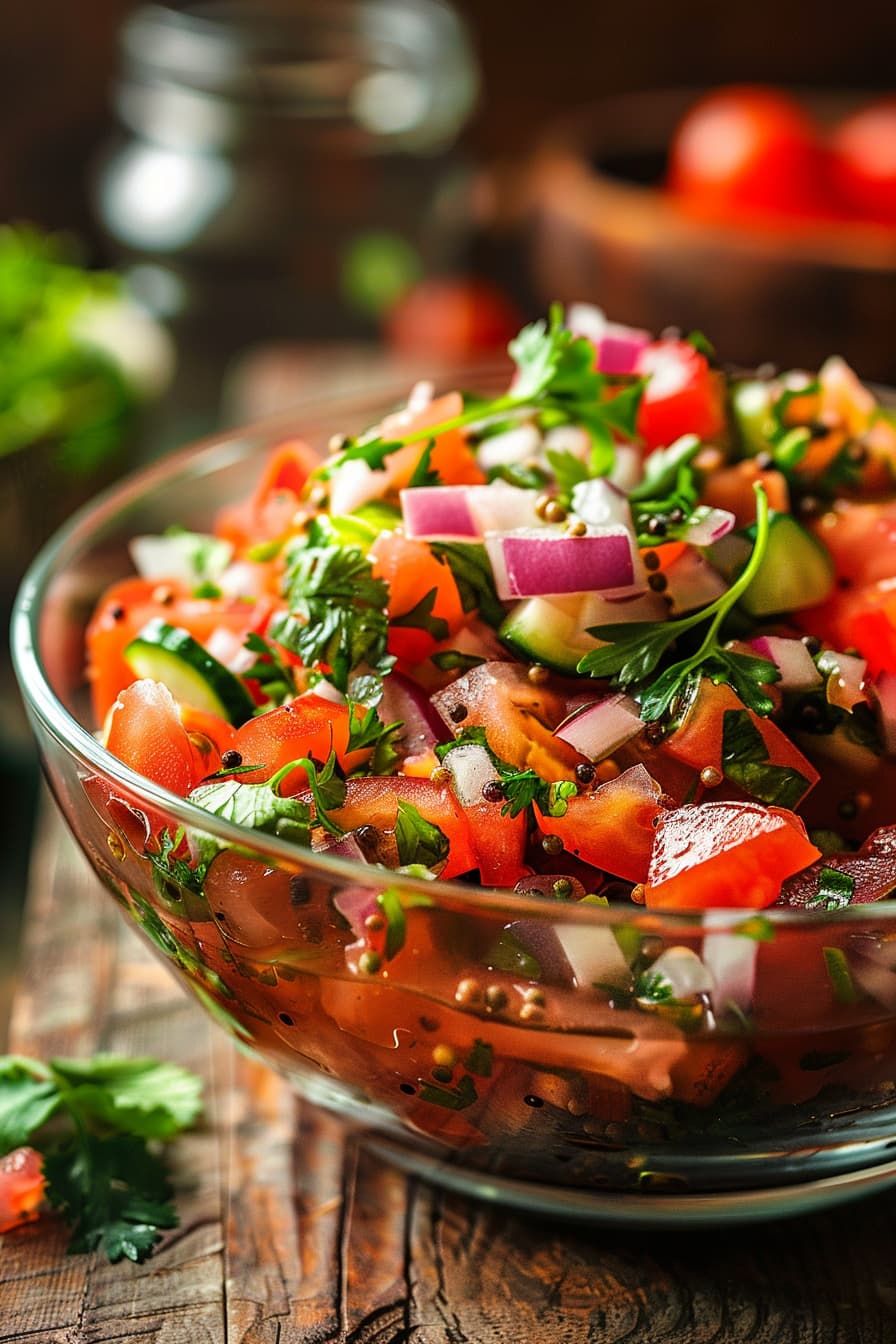
What more additions can you make to this salad?
- Protein Boost:
- Chickpeas: Rinse and drain canned chickpeas or use boiled chickpeas for a protein-rich addition.
- Paneer: Cube and lightly fry paneer (Indian cottage cheese) and add it to the salad for a vegetarian protein source.
- Quinoa or Lentils: Cooked quinoa or lentils can add a hearty element, making the salad more filling.
- Crunchy Elements:
- Nuts and Seeds: Toasted pumpkin seeds, sunflower seeds, or slivered almonds can add a delightful crunch and nutritional boost.
- Pomegranate Seeds: For a burst of sweet tartness and a pop of color, sprinkle some pomegranate seeds over the salad.
- Fruits for Sweetness:
- Mango: Add diced ripe mango for a sweet and tangy flavor that complements the spices beautifully.
- Apple: Thinly sliced or diced apple can introduce a crisp, sweet contrast to the savory elements.
- Greens for Volume:
- Mixed Greens: Toss in some mixed baby greens like spinach, arugula, or kale for added volume and a nutritional punch.
- Microgreens: Garnish the salad with microgreens for a concentrated nutrient boost and a gourmet touch.
- Additional Vegetables:
- Avocado: Incorporate diced avocado for creaminess and a dose of healthy fats.
- Beets: Roasted or boiled and then diced beets can add sweetness, vibrant color, and earthiness.
- Dressing Variations:
- Yogurt Dressing: Mix Greek yogurt with spices and a hint of honey for a creamy dressing alternative.
- Tahini Dressing: Blend tahini with lemon juice, garlic, and spices for a rich, nutty dressing that complements the salad’s flavors.
- Herbal Freshness:
- Fresh Dill or Basil: For a different herbal note, try adding chopped dill or basil to the salad, enhancing its freshness.
Mistakes To Avoid While Making Indian Spicy Salad
- Ingredient Selection:
- Common Error: Overripe or underripe vegetables can ruin the texture and taste of the salad.
- Solution: Choose vegetables that are fresh, ripe, and crisp. The freshness of ingredients is paramount in a raw salad to ensure the best texture and flavor.
- Substituting Spices Improperly: Using the wrong substitutes for traditional spices can significantly alter the authentic taste.
- Solution: Stick to the recipe’s spices when possible. If you must substitute, do so carefully, understanding the flavor profile of the substitute. For example, if you don’t have chaat masala, a mix of dry mango powder (amchur) and cumin powder can work as a replacement.
- Preparation Pitfalls:
- Inconsistent Chopping: Unevenly chopped vegetables can lead to a less enjoyable eating experience.
- Solution: Take the time to chop all vegetables in uniform size. This not only enhances the visual appeal but ensures each bite has a balanced mix of flavors and textures.
- Dressing Absorption: Adding dressing too early can make the salad soggy.
- Solution: Dress the salad close to serving time to maintain the vegetables’ crispness.
- Cooking Techniques:
- Overcomplicating: While Kachumber is about simplicity, adding too many ingredients can overwhelm the dish.
- Solution: Keep it simple. The beauty of this salad lies in its simplicity, with a focus on the fresh flavors of the vegetables, complemented by the spices.
- Seasoning and Flavoring:
- Over or Under Seasoning: The balance of spices is crucial in Kachumber.
- Solution: Start with less seasoning than you think you need, especially with powerful elements like black salt and chaat masala. You can always add more to taste just before serving.
- Presentation Tips:
- Cluttered Serving Dish: An overloaded plate can detract from the visual appeal of the salad.
- Solution: Use a large platter to spread out the salad. Garnish with fresh herbs or a sprinkle of spice for an inviting look.
- Ignoring Color Balance: The appeal of Kachumber lies in its vibrant colors.
- Solution: Pay attention to the color distribution when mixing your salad. The contrast of green cucumbers, red tomatoes, and white onions, for example, should be visible and not muddled.
Pairing Suggestions for Indian Spicy Salad
- Beverages: A refreshing cucumber mint cooler or a sweet and tangy mango lassi complements the spicy and tangy notes of Kachumber, balancing the palate with its coolness.
- Side Dishes: Pair with creamy dal (lentil soup) or a cooling raita (yogurt dip) to contrast the crisp texture and spices of the salad.
- Main Courses: Kachumber pairs excellently with rich, savory dishes such as biryani, grilled tandoori chicken, or paneer tikka. The salad’s freshness and crunch offer a delightful contrast to the heaviness of these dishes, enhancing the overall dining experience.
Seasonal Variation for Indian Spicy Salad
- Spring: Incorporate spring onions, radishes, and early peas for their fresh, crisp flavors. A lemon-mint dressing can highlight the season’s freshness.
- Summer: Focus on hydrating vegetables like cucumber, tomatoes, and bell peppers. Add a dash of refreshing mint or cilantro to complement the summer heat. A squeeze of lime adds a perfect tangy touch.
- Fall: Introduce root vegetables like beets or carrots that have been lightly pickled or roasted to add a sweet and tangy flavor. A dressing with a hint of honey and mustard can add warmth to the dish.
- Winter: Incorporate winter greens like kale or spinach, and fruits like pomegranate or orange segments for a sweet burst among the savory spices. A warmer spiced dressing, perhaps with a hint of ginger, complements the cooler weather.
Always Keep In Mind, that the inclusion of newer veggies or spices can end up impacting the overall taste of the dish, so you may need to adjust your other spices or salt portions to counter that.
Common Problems You May Face While Cooking Indian Spicy Salad
Problem: Selecting the Right Vegetables
- Issue: You might be unsure which vegetables are best for this salad.
- Solution: Opt for fresh, crisp vegetables. Cucumbers, tomatoes, and onions are staples. Feel free to experiment with radishes, carrots, or bell peppers for variety.
Problem: Balancing Flavors
- Issue: Getting the right balance of tangy, spicy, and salty can be challenging.
- Solution: Start with minimal amounts of spices and lemon juice, taste, and adjust gradually. Remember, it’s easier to add more than to fix an overly seasoned salad.
Problem: Dressing the Salad
- Issue: Dressing the salad too early might make it soggy.
- Solution: Add the dressing just before serving to maintain the vegetables’ crispness.
Problem: Chopping Vegetables
- Issue: Inconsistently chopped vegetables can affect the salad’s texture and appearance.
- Solution: Take your time to chop the vegetables into even, bite-sized pieces. This ensures each bite is a perfect blend of flavors and textures.
Problem: Dressing Too Tart or Bland
- Issue: The dressing might end up too lemony or lack flavor.
- Solution: If it’s too tart, balance it with a pinch of sugar. If it’s bland, add a little more salt, spices, or lemon juice. Tasting as you go is key.
Problem: Making It in Advance
- Issue: You want to prepare the salad in advance but worry it might lose its freshness.
- Solution: Chop the vegetables and prepare the dressing ahead of time, but keep them separate. Combine just before serving to ensure the salad remains fresh and crisp.
Problem: Serving
- Issue: Unsure how to best serve the salad for maximum impact.
- Solution: Serve the salad in a clear, wide bowl or platter to showcase the vibrant colors. A sprinkle of fresh herbs or a light dusting of chaat masala on top can add to its visual appeal.
Pro Tips for Perfecting Indian Spicy Salad
- Optimal Ingredient Quality: Always choose the freshest vegetables. Their crunch and flavor are the foundation of a great Kachumber.
- Precision in Cutting: Aim for uniformity in chopping your vegetables. This not only enhances the visual appeal but ensures every bite has a balanced mix of flavors.
- Balance of Flavors: Start with conservative amounts of spices and adjust as you go. The goal is to complement the vegetables, not overpower them.
- Dressing Timing: Dress the salad just before serving to maintain the vegetables’ crispness and freshness.
- Experiment with Spices: While traditional spices are key, don’t be afraid to experiment with others like sumac or smoked paprika for a unique twist.
FAQs about Indian Spicy Salad (Reader Questions Answered)
Q: Can I make Kachumber ahead of time?
A: Yes, but store the dressing and chopped vegetables separately in the fridge and combine them just before serving.
Q: What are the best substitutions if I can’t find chaat masala?
A: Mix equal parts of ground cumin, ground coriander, and a pinch of ground ginger with a squeeze of lemon juice as a substitute.
Q: How long does Kachumber last in the fridge?
A: When stored properly in an airtight container, it can last up to 2 days. Note that the vegetables may lose some of their crunch over time.
Q: Is there a way to reduce the onion’s strong flavor in the salad?
A: Soak the chopped onions in cold water for about 10-15 minutes, then drain. This helps mellow their pungency.
Closing Thoughts
Embarking on the creation of Indian Salad with Spices is more than just preparing a side dish; it’s about bringing a burst of freshness and flavor to your table. Experiment with the spices and vegetables you love, and find the balance that speaks to your palate.
Share your culinary adventures and discoveries in the comments below. Your feedback and experiences enrich our community and inspire fellow food lovers.
Indian Spicy Salad Preparation
Ingredients
- Cucumbers: 2 medium diced (Provides a refreshing crunch)
- Tomatoes: 2 large diced (Adds juiciness and color)
- Red Onion: 1 small finely chopped (For a sharp bite)
- Carrot: 1 large grated (For sweetness and texture)
- Radishes: 4-5 thinly sliced (Optional, for peppery notes)
- Cilantro: ¼ cup chopped (For freshness)
- Mint Leaves: 2 tablespoons chopped (Adds a cool, aromatic flavor)
- Lemon Juice: From 1 large lemon For tanginess
- Roasted Cumin Powder: 1 teaspoon For a smoky, earthy depth
- Chaat Masala: 1 teaspoon A tangy spice mix available at Indian groceries
- Black Salt Kala Namak: ½ teaspoon (For a unique sulfurous accent, substitute with Himalayan pink salt if unavailable)
- Olive Oil: 2 tablespoons Brings everything together; you can use any mild-flavored oil
- Pepper: To taste For a bit of heat
Instructions
Prepare the Vegetables:
- Begin by washing all your vegetables under cold running water. Dice the cucumbers and tomatoes, ensuring to remove the seeds from the tomatoes to avoid excess moisture in the salad. Peel and grate the carrot, and finely chop the red onion and radishes, if using.
Prepare the Vegetables:
- Begin by washing all your vegetables under cold running water. Dice the cucumbers and tomatoes, ensuring to remove the seeds from the tomatoes to avoid excess moisture in the salad. Peel and grate the carrot, and finely chop the red onion and radishes, if using.
Make the Dressing:
- In a small bowl, whisk together the lemon juice, olive oil, roasted cumin powder, chaat masala, black salt, and pepper. Start by adding half the amount of lemon juice and spices to the dressing, taste, and then adjust accordingly.
Combine:
- In a large mixing bowl, combine the diced cucumbers, tomatoes, grated carrot, chopped onions, radishes, cilantro, and mint. Pour the dressing over the vegetables and gently toss to ensure every piece is beautifully coated with the spiced dressing.
Chaat Masala and Roasted Cumin Powder:
- These spices are key to the salad's unique flavor profile.
Let It Marinate:
- Allow the salad to sit for about 5-10 minutes before serving.
Serve:
- Taste the salad and adjust the seasoning if necessary.


